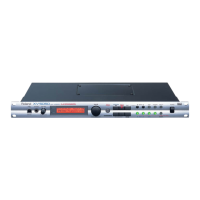Thank you, and congratulations on your choice of the Roland XV-5050.
Convention Used in This Manual
• Words enclosed in square brackets indicate buttons or a dial or a knob on the panel.
• (p. **) indicates a reference page.
* The explanations in this manual include illustrations that depict what should typically be shown by the display.
Note, however, that your unit may incorporate a newer, enhanced version of the system (e.g., includes newer
sounds), so what you actually see in the display may not always match what appears in the manual.
Copyright © 2001 ROLAND CORPORATION
All rights reserved. No part of this publication may be reproduced in any form without the
written permission of ROLAND CORPORATION.
Before using this unit, carefully read the sections entitled: “IMPORTANT SAFETY
INSTRUCTIONS” (p. 2), “USING THE UNIT SAFELY” (pp. 3–4), and “IMPORTANT NOTES”
(p. 5). These sections provide important information concerning the proper operation of
the unit. Additionally, in order to feel assured that you have gained a good grasp of every
feature provided by your new unit, Owner’s Manual should be read in its entirety. The
manual should be saved and kept on hand as a convenient reference.
Listening to the Demo Songs
fig.Cover
1. Hold down the [EXIT] button and press the [ BANK] button.
The DEMO PLAY screen appears in the display.
2. Turn the [VALUE] dial to choose the song you want to hear.
Choose “CHAIN PLAY” to hear all songs performed in order, starting with the first song.
3. Press the [ENTER] button to start demo song playback.
4. Press the [EXIT] button to stop the performance and return to the song-selection screen.
Press the [EXIT] button again to leave the DEMO PLAY screen.
* No data for the music that is played will be output from MIDI OUT.
1
2
4
3
XV-5050 Owner’s Manual
02890967 ’03-7-8N
OWNER’S MANUAL
To resize thickness, move all items on the front cover to left or right


